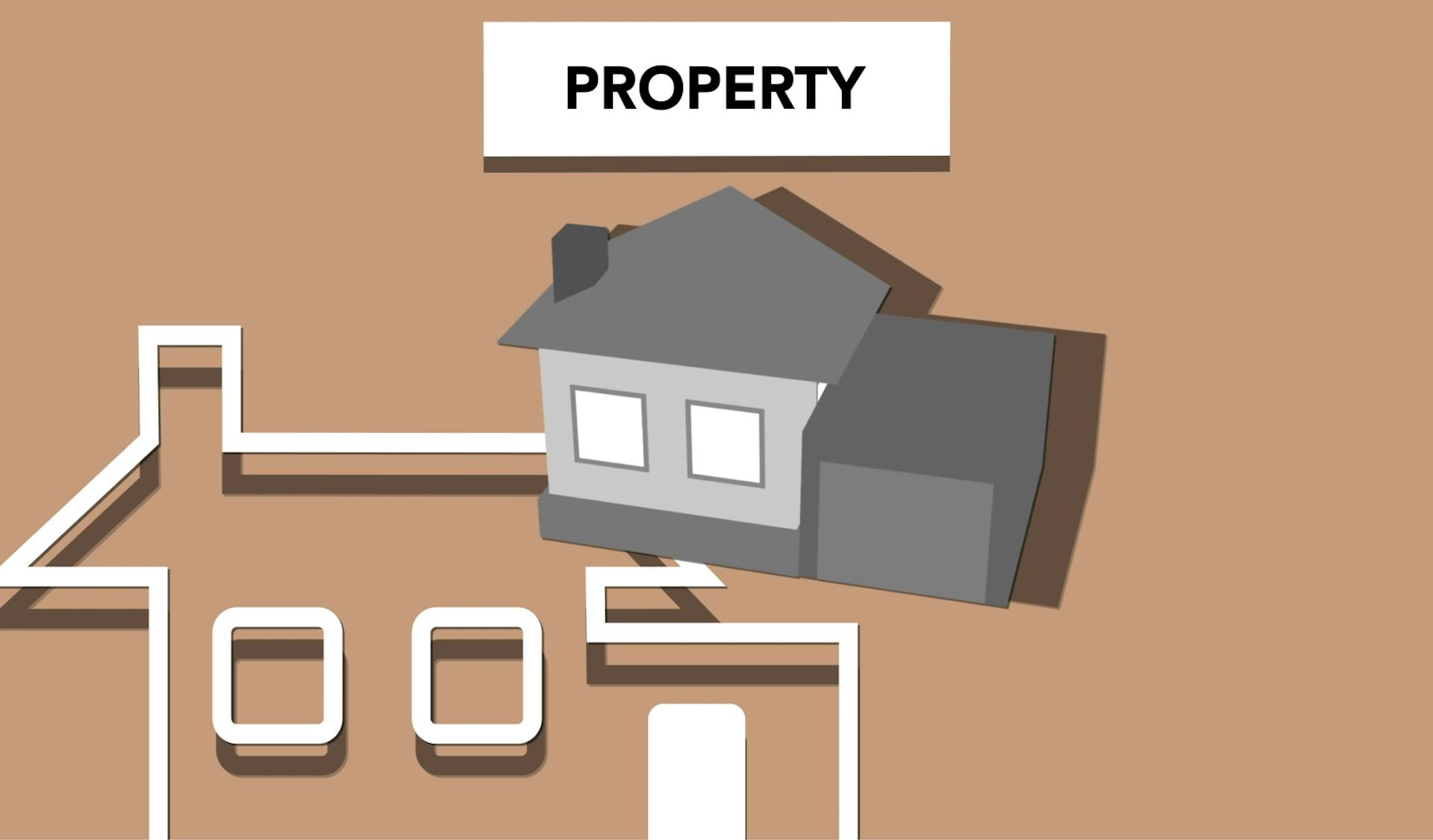
If you're a California property owner looking to sell and replace your investment property in another state, a 1031 exchange is a great option to consider. This type of exchange allows you to defer capital gains taxes on the sale of your property.
To qualify for a 1031 exchange, you must identify replacement properties within 45 days of selling your original property, and complete the exchange within 180 days. This timeline is crucial to avoid losing the tax benefits of the exchange.
You can identify up to three potential replacement properties, but you must be serious about purchasing at least one of them. This is known as the "identification requirement."
What is a 1031 Exchange?
A 1031 exchange is a swap of one real estate investment property for another that allows capital gains taxes to be deferred. The term gets its name from Section 1031 of the Internal Revenue Code (IRC).
The exchange is typically used to defer tax liability on the sale of real property like land, buildings, and attachments. This is because the sale of such properties can trigger significant tax implications.
An exchange can only be made with like-kind properties, which means you can swap a property in California for a similar property in another state. However, IRS rules limit its use with vacation properties.
The tax implications and time frames of a 1031 exchange can be problematic, so it's essential to understand the rules before attempting its use.
You might like: Do Bank Statements Count as Receipts for Taxes
Timelines and Rules
In a 1031 exchange from California to another state, it's essential to understand the timelines and rules that govern the process. You have 45 days from the date of the sale of the initial property to identify a replacement property.
The IRS allows you to designate three properties as long as you eventually close on one of them. You can even designate more than three if they fall within certain valuation tests. To qualify for a 180-day extension, you must select one of these three properties as your replacement property.
The 180-day rule is a critical aspect of the 1031 exchange timeline. You must close on the new property within 180 days of the sale of the old property. The two time periods run concurrently, which means that you start counting when the sale of your property closes.
Here's a summary of the key timelines and rules to keep in mind:
To ensure a smooth 1031 exchange, it's crucial to hire a qualified intermediary to help you with the exchange. They will facilitate the transaction by taking possession of the titles and funds and distributing them to the appropriate party at the appropriate time.
California Specific Rules
California has its own set of rules when it comes to 1031 exchanges, and it's essential to understand them to avoid any potential pitfalls.
The California Franchise Tax Board (FTB) regulates 1031 exchanges more strictly than other states, which means your exchange will be scrutinized more closely.
A Qualified Intermediary must facilitate the transaction and meet specific standards to ensure compliance with California's regulations.
If you exchange a California property for a "like-kind" property in another state, you may be subject to California state taxes, known as the claw-back provision.
Non-residents must file tax returns if they're subject to the claw-back provision, which could lead to double taxation if not handled properly.
California state tax applies to capital gains accrued through California property, so it's crucial to understand this provision to avoid any unexpected tax liabilities.
In a 1031 exchange, California property sold and replaced with property outside the state must be subject to capital gains tax, as per FTB Publication 1100 Irev 2007, section F.
Suggestion: Sell a Stock at a Loss and Buy Back
Exchange Process
The exchange process is a crucial step in a 1031 exchange from California to another state. To qualify for a 1031 exchange, you must sell your California property and use the proceeds to purchase a replacement property within 180 days.
You can purchase a replacement property in a different state, but you must identify it within 45 days of selling your California property. This can be done by creating a list of potential properties.
The 45-day identification period allows you to explore various options and find the right replacement property for your needs. You can identify up to three properties without limitation, and an unlimited number of properties as long as they are less than 20% of the aggregate fair market value of all identified properties.
It's essential to work with a qualified intermediary to facilitate the exchange process and ensure compliance with IRS regulations. They will hold the sale proceeds and facilitate the purchase of the replacement property.
You can purchase a replacement property in a different state, but it must be of equal or greater value than the California property you sold. The replacement property can be a single-family home, a rental property, or even a commercial building.
You might enjoy: How Many Properties Can You Identify in a 1031 Exchange
Reporting and Taxes
Reporting a 1031 exchange in California requires some extra steps. You must notify the IRS of the exchange by submitting Form 8824 with your tax return in the year the exchange occurred.
This form will require you to provide details about the properties exchanged, including the dates they were identified and transferred, and any relationship you may have with the other parties involved. You'll also need to disclose the value of the like-kind properties and the adjusted basis of the property given up.
The IRS takes accuracy very seriously, so it's essential to complete the form correctly and without error. If you don't, you could face a big tax bill and penalties.
To report a 1031 exchange on your California state income tax return, you'll need to file FTB Form 3840 if both the relinquished and replacement properties are outside of California. This form must be filed during the year the exchange occurs, and then annually until California state taxes are due on deferred gains or losses.
Expand your knowledge: 1031 Exchange 10 Year
Filing California Taxes
California taxes gains at the same rate as regular taxable income, ranging from 1% to 13.3%. You'll pay a rate of 10.3% if you earn between $254,500 and $305,100 per year.
If you realize a gain of $200,000 on the sale of your real property and are taxed at a rate of 10.3%, you'll be liable for $20,600 in capital gains tax.
To file a 1031 exchange on your California state income tax return, you'll need to report the exchange on FTB Form 3840 if both occur in the same year. This includes exchanging a California property for a like-kind property outside of California.
You must file FTB 3840 during the year in which the exchange occurs, and then every year until one of the following conditions is met:
- California state taxes are due on deferred gains or losses
- A 1031 exchange involves exchanging one out-of-state replacement property for another out-of-state replacement property
- A replacement property's owner dies
- A non-profit organization may receive the property, or you may donate it
The California Franchise Tax Board regulates 1031 exchanges more strictly than other states, so be prepared for a closer scrutiny of your exchange. A Qualified Intermediary must facilitate the exchange and meet specific standards.
Tax Implications: Cash and Debt
When you're dealing with a 1031 exchange, it's essential to handle the proceeds carefully to avoid any tax implications. If there's any cash left over after the exchange, it will be taxable as a capital gain.
You must consider mortgage loans or other debt on the property you relinquish and any debt on the replacement property. A discrepancy in debt can lead to trouble, so be sure to pay attention to this.
If you sell a property with a larger mortgage than the new property, the difference in liabilities is treated as boot and taxed accordingly. For example, if you sell a property with a $1 million mortgage and buy a new one with a $900,000 mortgage, the $100,000 difference would be taxed as income.
You must carefully consider the debt on your relinquished property and the debt on the replacement property to avoid any tax issues.
Recommended read: Can You Reinvest Capital Gains to Avoid Taxes
Depreciation Recapture
Depreciation recapture is a tax concept that affects property owners who have used a 1031 exchange to delay paying taxes on their investment properties. A 1031 exchange allows you to roll over the cost basis from the old property to the new one, continuing depreciation calculations as if you still owned the old property.
The IRS will want to recapture some of the deductions made on the old property and factor them into the total taxable income when it's eventually sold. This can be a significant tax burden for property owners who have been using a 1031 exchange to defer taxes.
A 1031 exchange can help delay depreciation recapture by essentially rolling over the cost basis from the old property to the new one. This means your depreciation calculations continue uninterrupted, allowing you to avoid a significant tax hit.
Intriguing read: 1031 Exchange and Depreciation Recapture
Reporting to the IRS
Reporting to the IRS is a crucial step in the 1031 exchange process. You must notify the IRS of the exchange by submitting Form 8824 with your tax return in the year it occurred.
This form requires you to provide detailed information, including descriptions of the properties exchanged, the dates of identification and transfer, and the value of the like-kind properties.
You'll also need to disclose any relationship you have with the other parties involved and the adjusted basis of the property given up, as well as any liabilities assumed or relinquished.
The form must be completed correctly and without error, as any mistakes could lead to penalties and a big tax bill.
Here are the key details you'll need to report to the IRS:
- Descriptions of the properties exchanged
- Dates of identification and transfer
- Value of the like-kind properties
- Relationship with other parties involved
- Adjusted basis of the property given up
- Liabilities assumed or relinquished
Types of Exchanges
If you're considering a 1031 exchange from California to another state, it's essential to understand the different types of exchanges available to you.
In California, there are four main types of 1031 exchanges to choose from: Simultaneous exchange, Delayed exchange, Reverse exchange, and Construction or improvement exchange.
A Simultaneous exchange allows you to exchange one property for another on the same day. This type of exchange can be beneficial if you want to avoid holding onto the replacement property for a period of time.
The Delayed exchange, on the other hand, requires you to hold onto the replacement property for a specific period of time before selling the relinquished property. This type of exchange can be a good option if you need to use the funds from the relinquished property for a short period.
Intriguing read: 1031 Exchange Holding Period
A Reverse exchange is a type of exchange where you acquire the replacement property before selling the relinquished property. This type of exchange is often used in situations where the replacement property is already under contract.
The Construction or improvement exchange allows you to exchange one property for another that is being improved or constructed. This type of exchange can be beneficial if you want to improve the property you're exchanging into or if you're building a new property.
Here are the four types of exchanges in a nutshell:
Net Market Value
When you're considering a 1031 exchange from California to another state, understanding the net market value is crucial.
The net market value of the property you're relinquishing determines the tax deferral. For example, if the net market value of the relinquished property is $1,250,000 and the net market value of the exchanged property is $1,400,000, the tax deferral would be 100%.
A unique perspective: Tax Equity Market
However, the tax deferral won't be 100% if the mortgage balances on the two properties are the same. This is because the mortgage balance on the new property must be the same as or more than the mortgage balance on the relinquished property.
Here are some examples of mortgage balances that would invalidate the 100% tax deferral:
- Mortgage on relinquished property: $650,000
- Mortgage on exchanged property: $515,000
In this case, the mortgage balance on the exchanged property is less than the mortgage balance on the relinquished property, so the tax deferral would be invalid.
Recommended read: 1031 Exchange Mortgage on Replacement Property
Frequently Asked Questions
How to avoid California clawback?
To avoid California clawback, consider either relocating outside of California or completing the sale within the state. This can help minimize the impact of California's high income tax rates, which range from 9.55% to 10.55%.
What is the best state for 1031 exchanges?
For a successful 1031 exchange, consider states with no state income tax, such as Florida, Texas, and Nevada, which also boast strong real estate markets. These states offer favorable conditions for 1031 exchanges.
Sources
- https://www.investopedia.com/financial-edge/0110/10-things-to-know-about-1031-exchanges.aspx
- https://atlas1031.com/blog/1031-exchange-rules-california/
- https://buynnnproperties.com/1031-rules-california/
- https://www.firstexchange.com/exchangingindifferentstates
- https://attorneysre.com/1031-exchange-rules-california/
Featured Images: pexels.com


